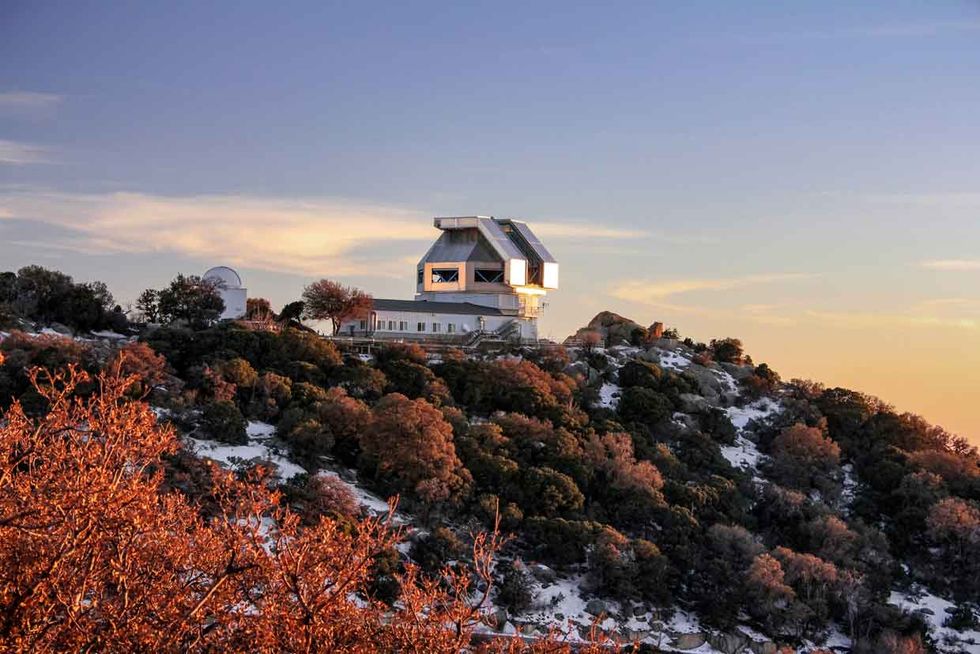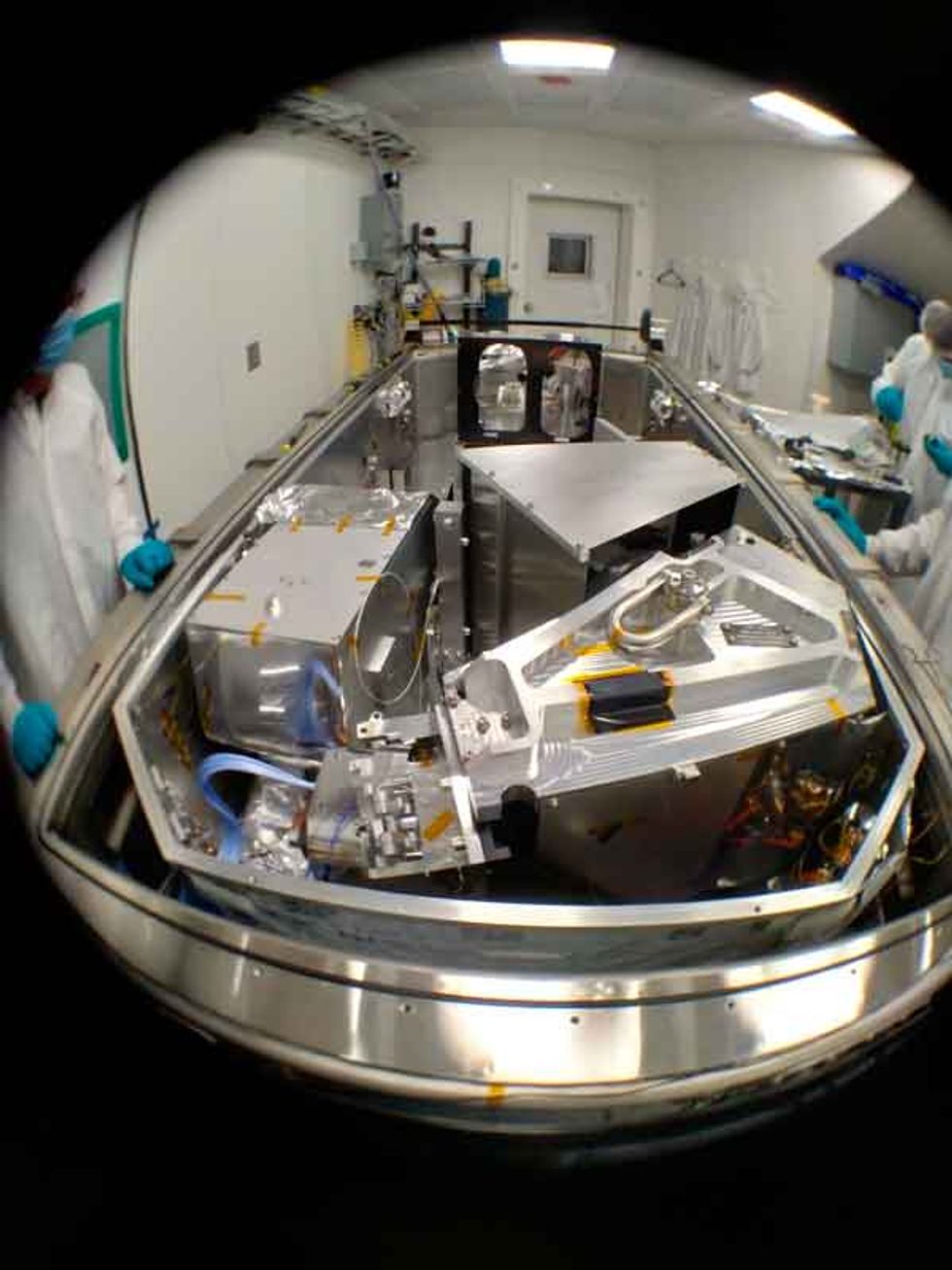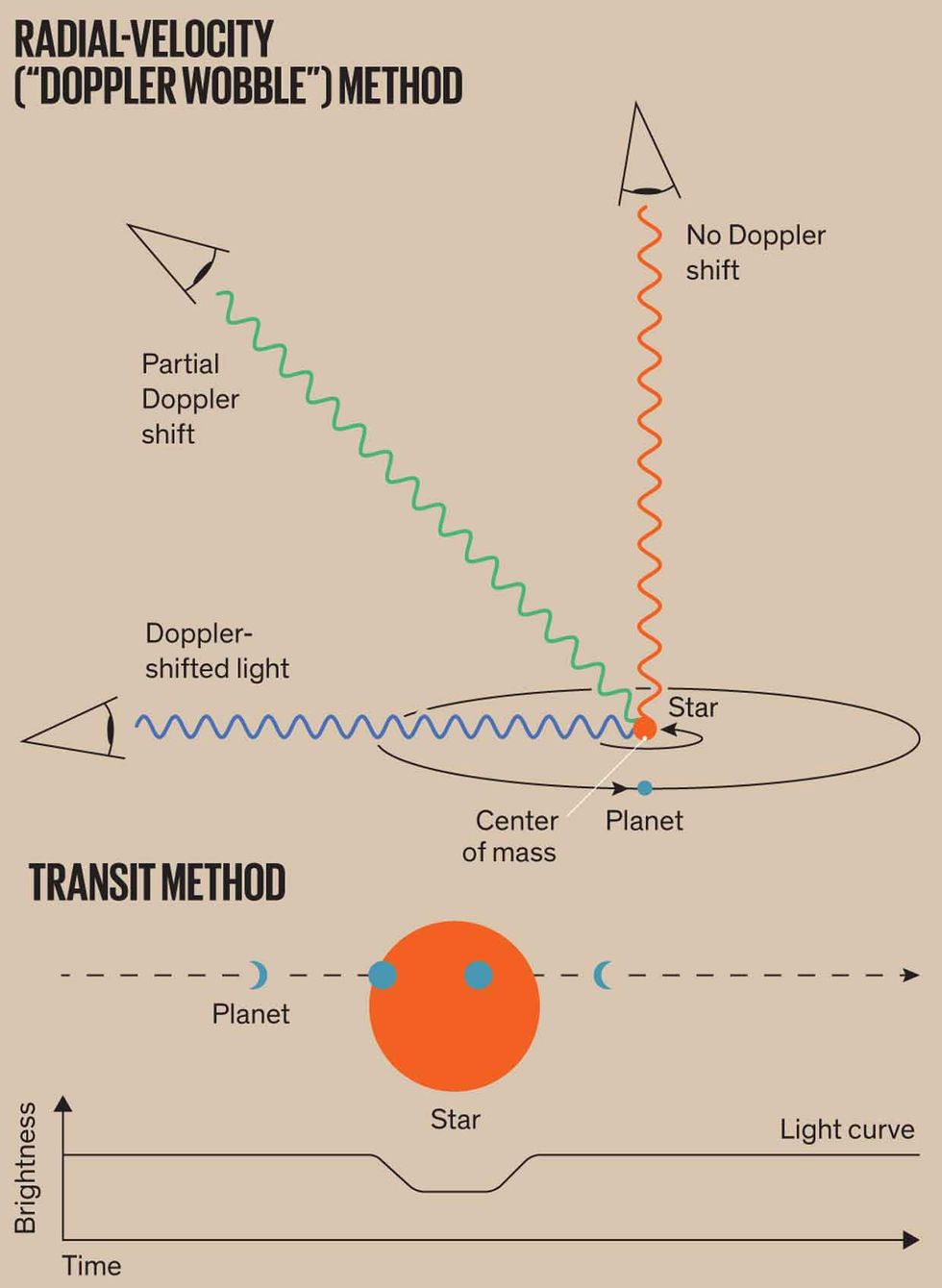Atomically Precise Sensors Could Detect Another Earth
Tiny wobbles of distant stars may soon help reveal life-sustaining worlds
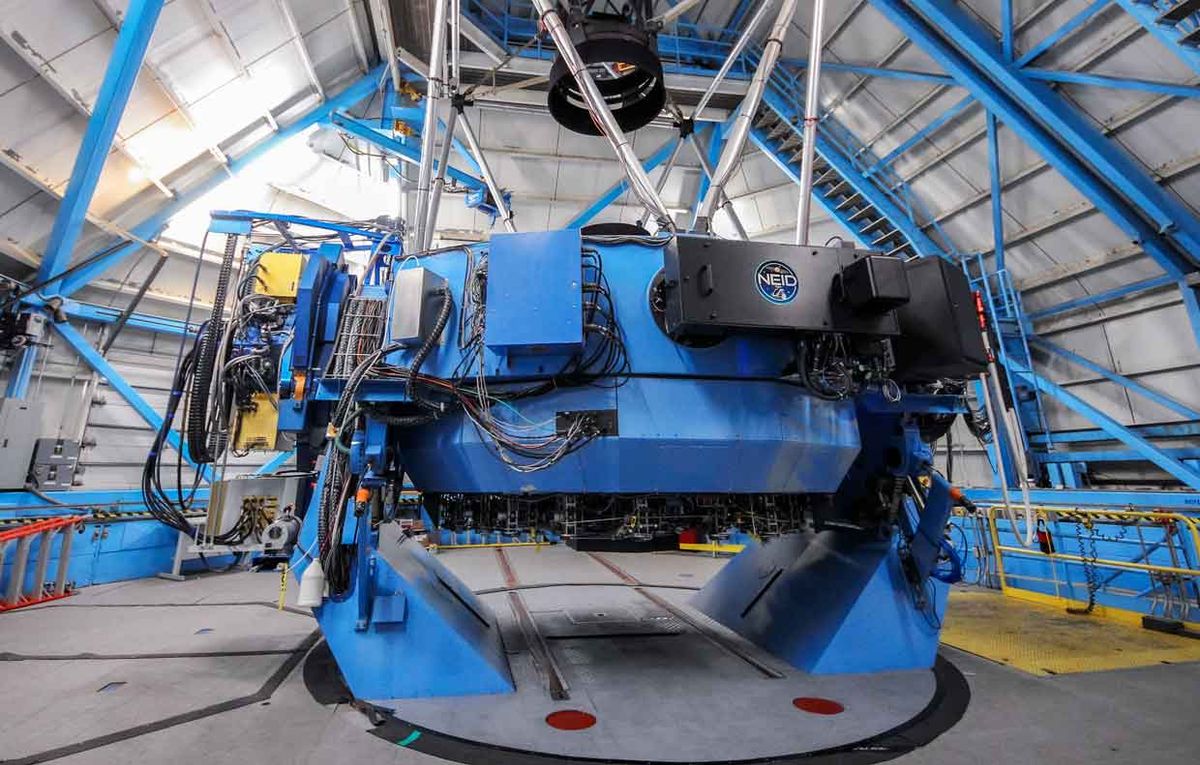
Funnel for Light: The 3.5-meter mirror of the WIYN telescope channels starlight into a glass fiber, which carries it to the NEID spectrograph, located in the basement of the observatory.
Gazing into the dark and seemingly endless night sky above, people have long wondered: Is there another world like ours out there, somewhere? Thanks to new sensors that we and other astronomers are developing, our generation may be the first to get an affirmative answer—and the earliest hints of another Earth could come as soon as this year.
Astronomers have discovered thousands of exoplanets so far, and almost two dozen of them are roughly the size of our own planet and orbiting within the so-called habitable zone of their stars, where water might exist on the surface in liquid form. But none of those planets has been confirmed to be rocky, like Earth, and to circle a star like the sun. Still, there is every reason to expect that astronomers will yet detect such a planet in a nearby portion of the galaxy.
So why haven't they found it yet? We can sum up the difficulty in three words: resolution, contrast, and mass. Imagine trying to spot Earth from hundreds of light-years away. You would need a giant telescope to resolve such a tiny blue dot sitting a mere 150 million kilometers (0.000016 light-year) from the sun. And Earth, at less than a billionth the brightness of the sun, would be hopelessly lost in the glare.
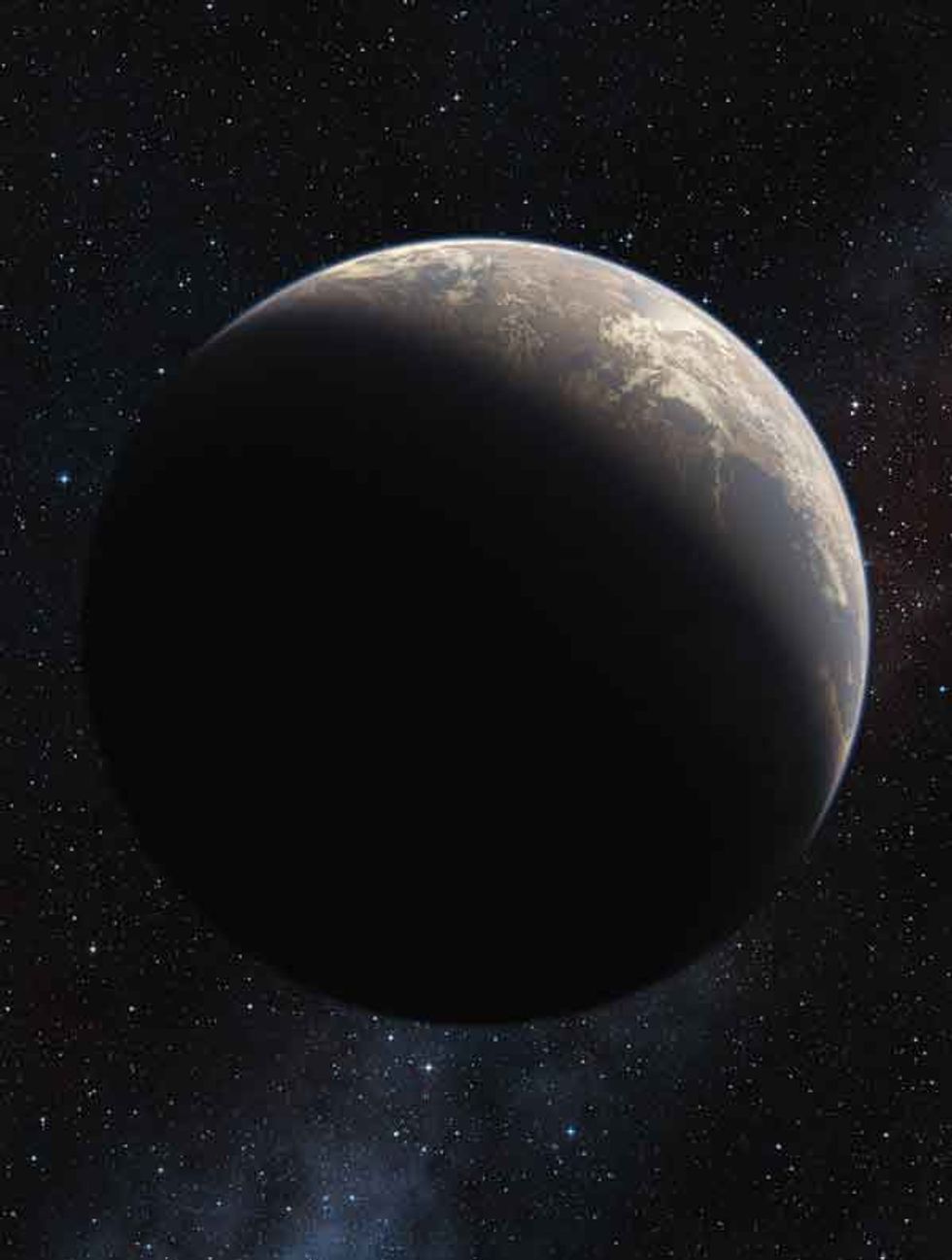
For the same reasons, current observatories—and even the next generation of space telescopes now being built—have no chance of snapping a photo of our exoplanetary twin. Even when such imaging does become possible, it will allow us to measure an exoplanet's size and orbital period, but not its mass, without which we cannot determine whether it is rocky like Earth or largely gaseous like Jupiter.
For all these reasons, astronomers will detect another Earth first by exploiting a tool that's been used to detect exoplanets since the mid-1990s: spectroscopy. The tug of an orbiting exoplanet makes its star “wobble" ever so slightly, inducing a correspondingly slight and slow shift in the spectrum of the star's light. For a doppelgänger of Earth, that fluctuation is so subtle that we have to look for a displacement measuring just a few atoms across in the patterns of the rainbow of starlight falling on a silicon detector in the heart of a superstable vacuum chamber.
Our group at Pennsylvania State University, part of a team funded by NASA and the U.S. National Science Foundation (NSF), has constructed an instrument called NEID (short for NN-explore Exoplanet Investigations with Doppler spectroscopy), for deployment in Arizona to search the skies of the Northern Hemisphere. (The name NEID—pronounced “NOO-id"—derives from an American Indian word meaning “to see.") A Yale University team has built a second instrument, called EXPRES (for EXtreme PREcision Spectrometer), which will also operate in Arizona. Meanwhile, a third team led by the University of Geneva and the European Southern Observatory is commissioning an instrument called ESPRESSO (Echelle SPectrograph for Rocky Exoplanet and Stable Spectroscopic Observations), in Chile, to hunt in the southern skies.
All three groups are integrating Nobel Prize–winning technologies in novel ways to create cutting-edge digital spectrographs of femtometer-scale precision. Their shared goal is to achieve the most precise measurements of stellar motions ever attempted. The race to discover the elusive “Earth 2.0" is afoot.
Using spectroscopy to pick up an exoplanet-induced wobble is an old idea, and the basic principle is easy to understand. As Earth circles the sun in a huge orbit, it pulls the sun, which is more than 300,000 times as massive, into a far smaller “counter orbit," in which the sun moves at a mere 10 centimeters per second, about the speed of a box turtle.
Even such slow motions cause the wavelengths of sunlight to shift—by less than one part per billion—toward shorter, bluer wavelengths in the direction of its motion and toward longer, redder wavelengths in the other direction. Exoplanets induce similar Doppler shifts in the light from their host stars. The heavier the planet, the bigger the Doppler shift, making the planet easier to detect.
In 1992, radio astronomers observing odd objects called pulsars used the timing of the radio signals they emit to infer that they hosted exoplanets. In 1995, Michel Mayor and Didier Queloz of the University of Geneva were using the Doppler wobbles in the light from ordinary stars to search for orbiting companions and found a giant planet orbiting the star 51 Pegasi every four days.
This unexpected discovery, for which Mayor and Queloz won the 2019 Nobel Prize in Physics, opened the floodgates. The “Doppler wobble" method has since been used to detect more than 800 exoplanets, virtually all of them heavier than Earth.
So far, almost all of the known exoplanets that are the size and mass of Earth or smaller were discovered using a different technique. As these planets orbit, they fortuitously pass between their star and our telescopes, causing the apparent brightness of the star to dim very slightly for a time. Such transits, as astronomers call them, give away the planet's diameter—and together with its wobble they will reveal the planet's mass.
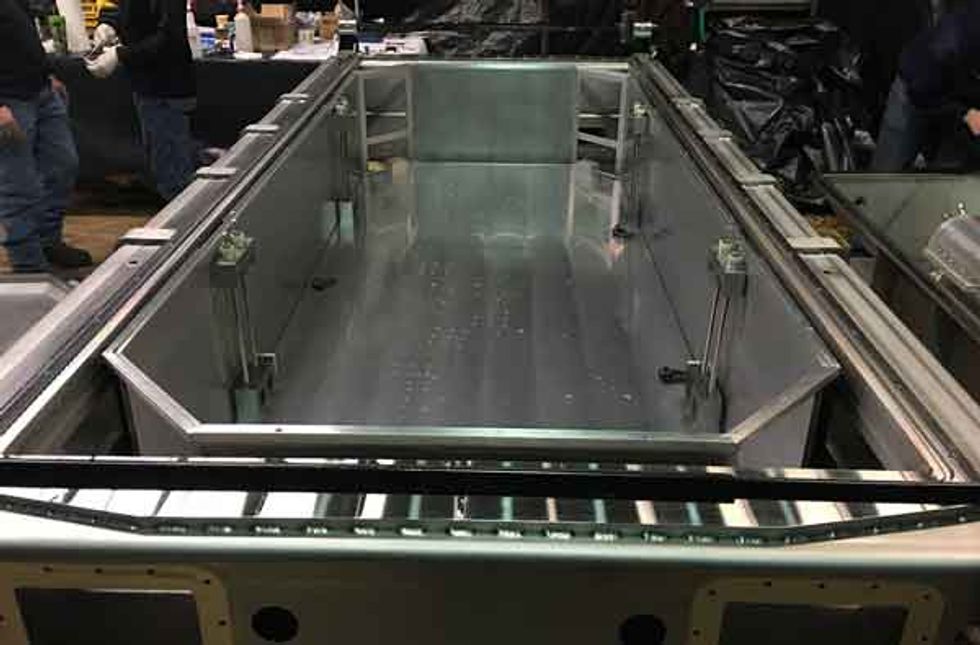
Since the first transiting exoplanet was discovered in 1999, the Kepler space telescope and Transiting Exoplanet Survey Satellite (TESS) have found thousands more, and that number continues to grow. Most of these bodies are unlike any in our solar system. Some are giants, like Jupiter, orbiting so close to their host stars that they make the day side of Mercury look chilly. Others are gassy planets likeNeptune or Uranus but much smaller, or rocky planets like Earth but much larger.
Through statistical analysis of the bounteous results, astronomers infer that our own Milky Way galaxy must be home to billions of rocky planets like Earth that orbit inside the habitable zones of their host stars. A study published recently by scientists who worked on the Kepler mission estimated that at least 7 percent—and probably more like half—of all sunlike stars in the Milky Way host potentially habitable worlds. That is why we are so confident that, with sufficiently sensitive instruments, it should be possible to detect other Earths.
But to do so, astronomers will have to measure the mass, size, and orbital period of the planet, which means measuring both its Doppler wobble and its transit. The trove of data from Kepler and TESS—much of it yet to be analyzed—has the transit angle covered. Now it's up to us and other astronomers to deliver higher-precision measurements of Doppler wobbles.
NEID, our contestant in the race to find Earth 2.0, improves the precision of Doppler velocimetry by making advances on two fronts simultaneously: greater stability and better calibration. Our design builds on work done in the 2000s by European astronomers who built the High Accuracy Radial Velocity Planet Searcher (HARPS), which controlled temperature, vibration, and pressure so well that it faithfully tracked the subtle Doppler shifts of a star's light over years without sacrificing precision.
In 2010, we and other experts in this field gathered at Penn State to compare notes and discuss our aspirations for the future. HARPS had been producing blockbuster discoveries since 2002; U.S. efforts seemed to be lagging behind. The most recent decadal review by the U.S. National Academy of Sciences had recommended an “aggressive program" to regain the lead.
Astronomers at the workshop drafted a letter to NASA and the NSF that led to them commissioning a new spectrograph, to be installed at the 3.5-meter WIYN telescope at Kitt Peak National Observatory, in Arizona. (“WIYN" is an acronym derived from the names of the four founding institutions.) NEID would be built at Penn State by an international consortium.
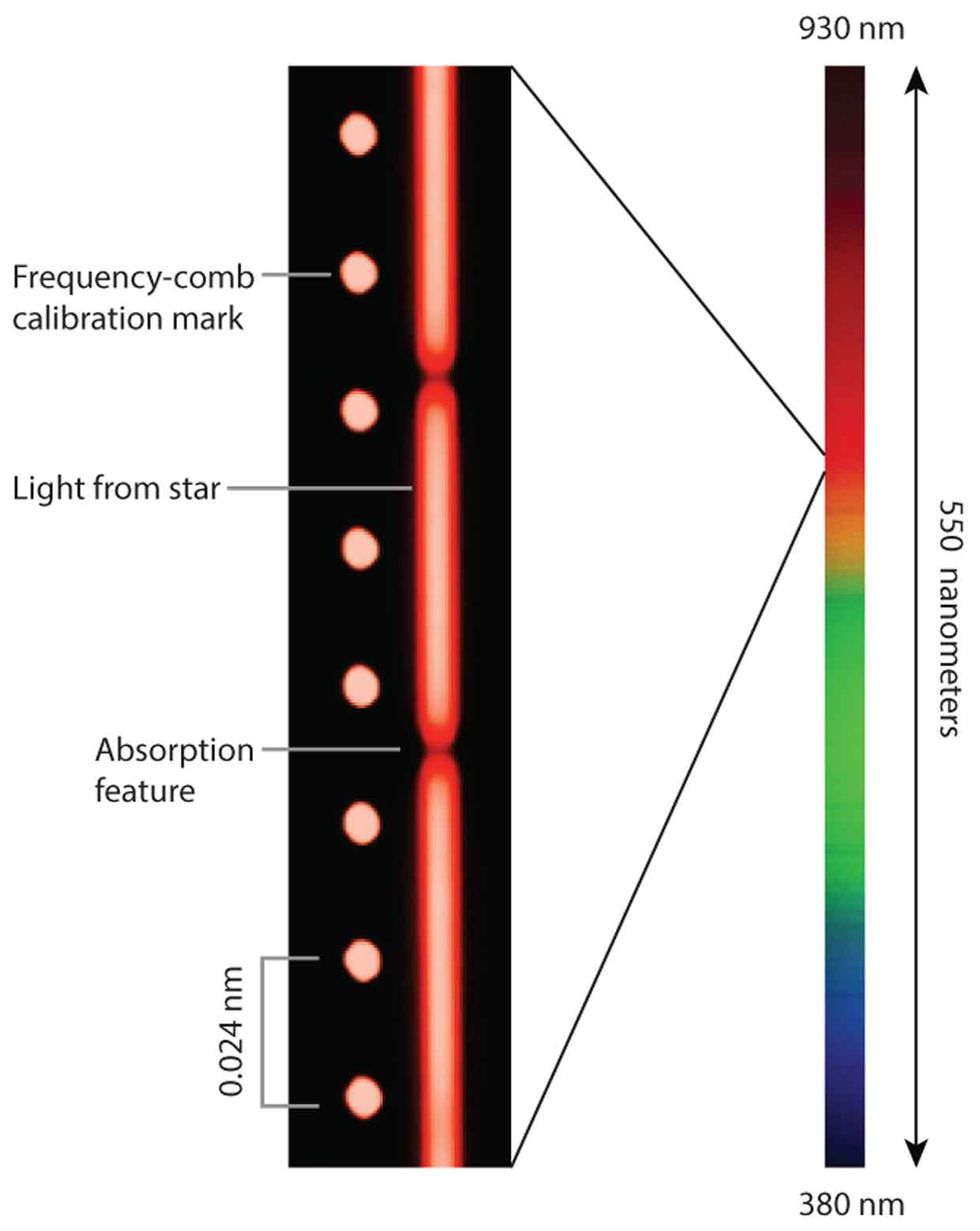
Like HARPS before it, NEID combines new technologies with novel methods to achieve unprecedented stability during long-term observations. Any tiny change in the instrument—whether in temperature or pressure, in the way starlight illuminates its optics, or even in the nearly imperceptible expansion of the instrument's aluminum structure as it ages—can cause the dispersed starlight to creep across the detector. That could look indistinguishable from a Doppler shift and corrupt our observations. Because the wobbles we aim to measure show up as shifts of mere femtometers on the sensor—comparable to the size of the atoms that make up the detector—we have to hold everything incredibly steady.
That starts with exquisite thermal control of the instrument, which is as big as a car. It has required us to design cutting-edge digital detectors and sophisticated laser systems, tied to atomic clocks. These systems act as the ruler by which to measure the amplitudes of the stellar wobbles.
Yet we know we cannot build a perfectly stable instrument. So we rely on calibration to take us the rest of the way. Previous instruments used specialized lamps containing thorium or uranium, which give off light at hundreds of distinct, well-known wavelengths—yardsticks for calibrating the spectral detectors. But these lamps change with age.
NEID instead relies on a laser frequency comb: a Nobel Prize–winning technology that generates laser light at hundreds of evenly spaced frequency peaks. The precision of the comb, limited only by our best atomic clocks, is better than a few parts per quadrillion. By using the comb to regularly calibrate the instrument, we can account for any residual instabilities.
Somewhere out there, another Earth is orbiting its star, which wobbles slowly in sympathy around their shared center of gravity. Over the course of a year or so, the star's spectrum shifts ever so slightly toward the red, then toward the blue. As that starlight reaches Kitt Peak, the telescope brings it to a sharp focus at the tip of a glass optical fiber, which guides the light down into the bowels of the observatory through a conduit into a custom-designed room housing the NEID instrument.
The focus spot must strike the fiber in exactly the same way with every observation; any variations can translate into slightly different illumination patterns on the detector, mimicking stellar Doppler shifts. The quarter-century-old WIYN telescope was never designed for such work, so to ensure consistency our colleagues at the University of Wisconsin–Madison built an interface that monitors the focus and position of the stellar image hundreds of times a second and rapidly adjusts to hold the focal point steady.
Down in the insulated ground-floor room, a powerful heating-and-cooling system keeps a vacuum chamber bathed in air at a constant temperature of 20 °C. NEID's spectrograph components, held at less than one-millionth of the standard atmospheric pressure inside the vacuum chamber, are protected from even tiny changes in pressure by a combination of pumps and “getters"—including 2 liters of cryogenic charcoal—to which stray gas molecules stick.
How To Weigh a Planet
The first step in estimating the mass of an exoplanet is to estimate the mass of the star it orbits. That can be done based on the spectral type of that star, for example. The mass of a planet can then be gauged by measuring how it influences the motion of the star.
Although you might think that a planet orbits a star, in truth the planet and star both orbit their shared center of mass. Because the star is much more massive than the planet, their center of mass is located close to the center of the star; it may even be located within the star. In any case, the star moves around this point as the planet travels in its orbit. Astronomers can measure this stellar “wobble" by virtue of subtle Doppler shifts in the light the star emits [top diagram].
When the star moves in the direction of Earth, characteristic absorption features in the spectrum of light it emits will be shifted toward shorter wavelengths. When the star wobbles in the opposite direction, these absorption features will be shifted toward longer wavelengths. By measuring these shifts over time, astronomers can work out the orbital period of the planet. Knowing the mass of the star, they can also determine the size of the planet's orbit and thus how fast it moves.
If you know how fast the star is moving when it wobbles, you'll have all the information needed to determine the mass of the planet. The problem is that the Doppler shifts reveal only the velocity of motion toward or away from Earth. If Earth is in the plane of the planet's orbit, astronomers will observe a Doppler shift of maximal value [blue line]. If Earth is located at 90 degrees to that plane, no Doppler will be seen [orange]. If Earth is at some intermediate angle, the Doppler shift will be of some intermediate value [green]. Lacking additional information, this angle is unknown, and all that can be determined is a minimum estimate of the planet's mass. Fortunately, sometimes more is known.
If Earth is in the orbital plane of the planet or very close to that, the planet may periodically pass in front of the star, blocking a portion of its light [bottom diagram]. If astronomers detect the planet transiting in front of its star, they will know that Earth must be in the orbital plane of the planet and that their estimate of mass is not just a minimum value. They will thus have a good measure of the planet's mass. The amount of light blocked also allows them to estimate the size, and thus the density, of the planet.
A network of more than 75 high-precision thermometers actively controls 30 heaters placed around the instrument's outer surface to compensate for any unexpected thermal fluctuations. With no moving parts or motors that might generate heat and disrupt this delicate thermal balance, the system is able to hold NEID's core optical components to exactly 26.850 °C, plus or minus 0.001 °C.
As the starlight emerges from the optical fiber, it strikes a parabolic collimating mirror and then a reflective diffraction grating that is 800 millimeters long. The grating splits the light into more than 100 thin colored lines. A large glass prism and a system of four lenses then spread the lines across a silicon-based, 80-megapixel charge-coupled device. Within that CCD sensor, photons from the distant star are converted into electrons that are counted, one at a time, by supersensitive amplifiers.
Heat from the amplifiers makes the detector itself expand and contract in ways that are nearly impossible to calibrate. We had to devise some way to keep that operating heat as constant and manageable as possible.
Electrons within the CCD accumulate in pixels, which are actually micrometer-size wells of electric potential, created by voltages applied to minuscule electrodes on one side of the silicon substrate. The usual approach is to hold these voltages constant while the shutter is open and the instrument collects stellar photons. At the end of the observation, manipulation of the voltages shuffles collected electrons over to the readout amplifiers. But such a technique generates enough heat—a few hundredths of a watt—to cripple a system like NEID.
Our team devised an alternative operating method that prevents this problem. We manipulate the CCD voltages during the collection of stellar photons, jiggling the pixels slightly without sacrificing their integrity. The result is a constant heat load from the detector rather than transient pulses.
Minor imperfections in the CCD detector present us with a separate engineering challenge. State-of-the-art commercial CCDs have high pixel counts, low noise, and impeccable light sensitivity. These sensors nevertheless contain tiny variations in the sizes and locations of the millions of individual pixels and in how efficiently electrons move across the detector array. Those subtle flaws induce smearing effects that can be substantially larger than the femtometer-size Doppler shifts we aim to detect. The atomic ruler provided by the laser frequency comb allows us to address this issue by measuring the imperfections of our sensor—and appropriately calibrating its output—at an unprecedented level of precision.
We also have to correct for the motion of the telescope itself as it whirls around Earth's axis and around the sun at tens of kilometers per second—motion that creates apparent Doppler shifts hundreds of thousands of times as great as the ~10 cm/s wobbles caused by an exoplanet. Fortunately, NASA's Jet Propulsion Laboratory has for decades been measuring Earth's velocity through space to much better precision than we can measure it with our spectrograph. Our software combines that data with sensitive measurements of Earth's rotation to correct for the motion of the telescope.
In January 2020, NEID achieved its “first light" with observations of 51 Pegasi. Since then, we have refined the calibration and tuning of the instrument, which in recent months has approached our design target of measuring Doppler wobbles as slow as 33 cm/s—a big step toward the ultimate goal of 10-cm/s sensitivity. With commissioning underway, the instrument is now regularly measuring some of the nearest, brightest sunlike stars for planets.
Meanwhile, in Chile's Atacama Desert, the most sophisticated instrument of this kind yet built, ESPRESSO, has been analyzing Doppler shifts in starlight gathered and combined from the four 8.2-meter telescopes of the Very Large Telescope. ESPRESSO is a technological marvel that achieves unprecedentedly precise observations of very faint and distant stars by using two arms that house separate optics and CCD detectors optimized for the red and blue halves of the visible spectrum.
ESPRESSO has already demonstrated measurements that are precise to about 25 cm/s, with still better sensitivity expected as the multiyear commissioning process continues. Astronomers have used the instrument to confirm the existence of a supersize rocky planet in a tight orbit around Proxima Centauri, the star nearest the sun, and to observe the extremely hot planet WASP-76b, where molten iron presumably rains from the skies.
At the 4.3-meter Lowell Discovery Telescope near Flagstaff, Ariz., EXPRES has recently demonstrated its own ability to measure stellar motions to much better than 50 cm/s. Several other Doppler velocimeters, to be installed on other telescopes, are either in the final stages of construction or are coming on line to join the effort. The variety of designs will help astronomers observe stars of differing kinds and magnitudes.
Since that 2010 meeting, our community of instrument builders has quickly learned which design solutions work well and which have turned out to be more trouble than they are worth. Perhaps when we convene at the next such meeting in California, one group will have already found Earth 2.0. There'll be no telling, though, whether it harbors alien life—and if so, whether the aliens have also spied us.
This article appears in the March 2021 print issue as “ How We'll Find Another Earth."
